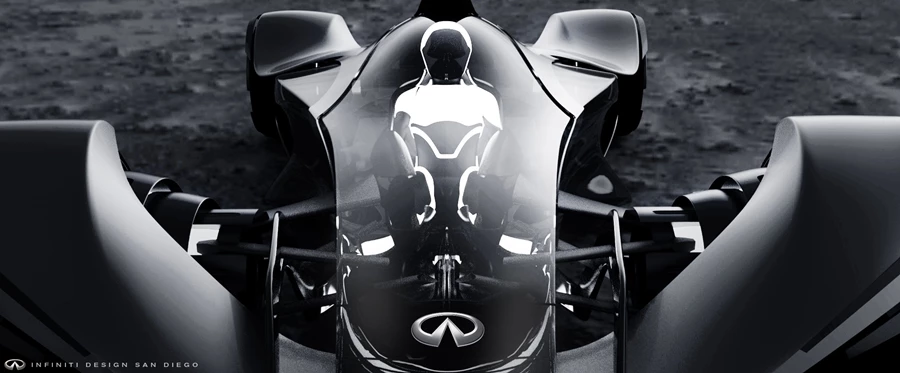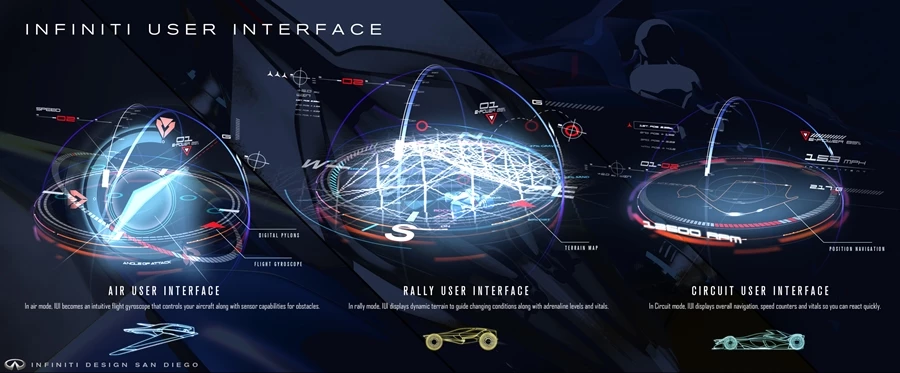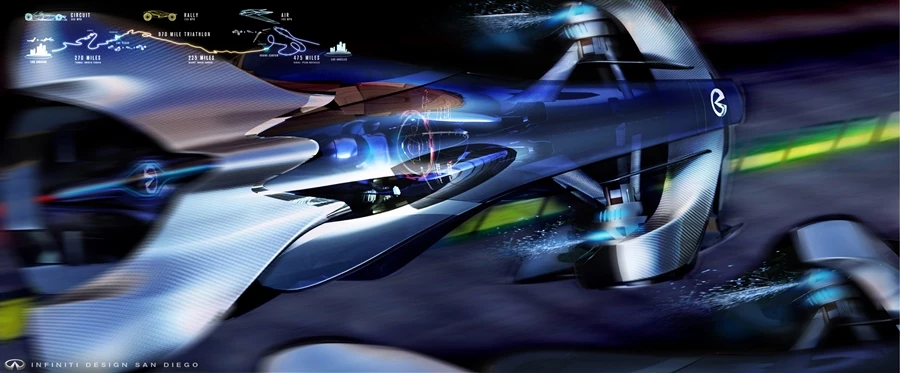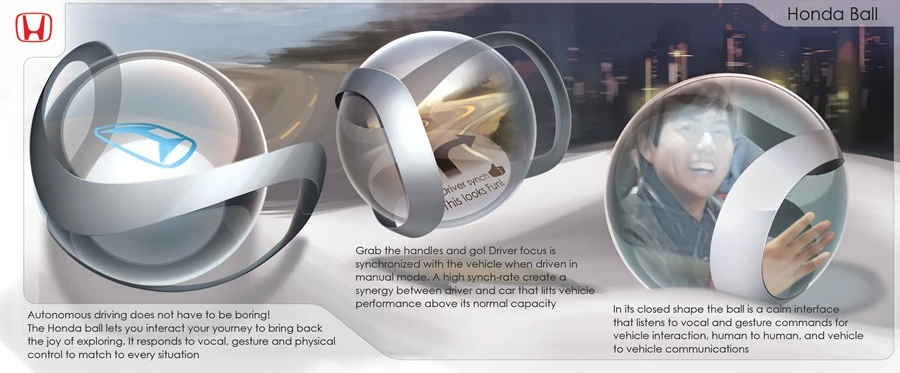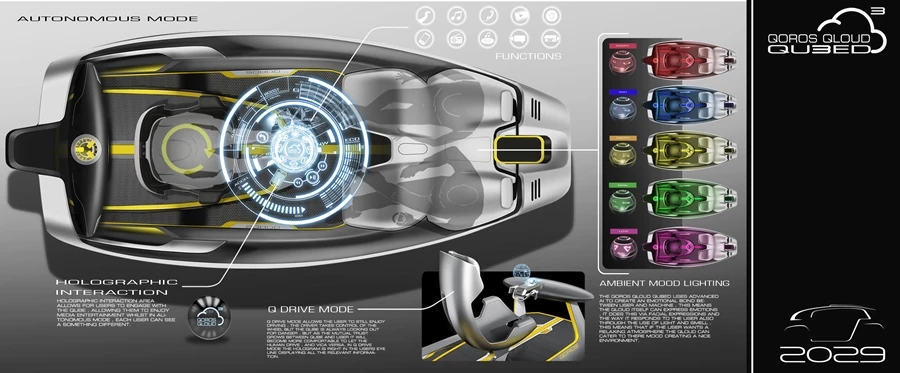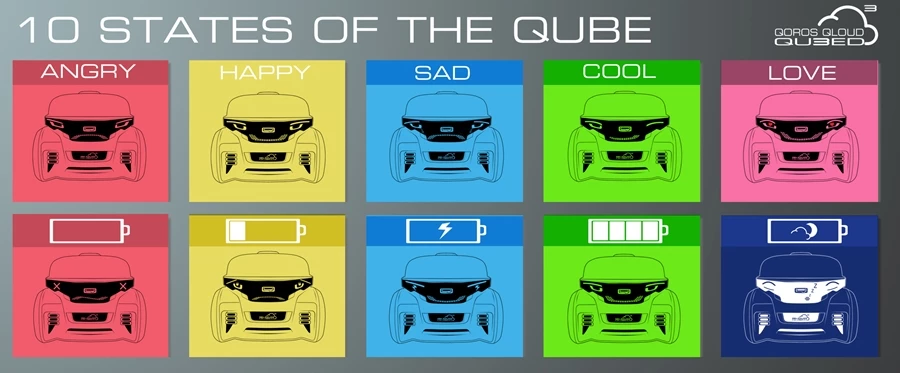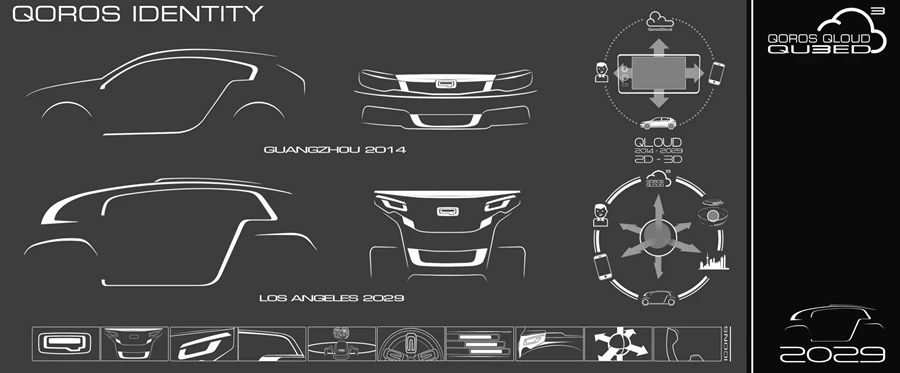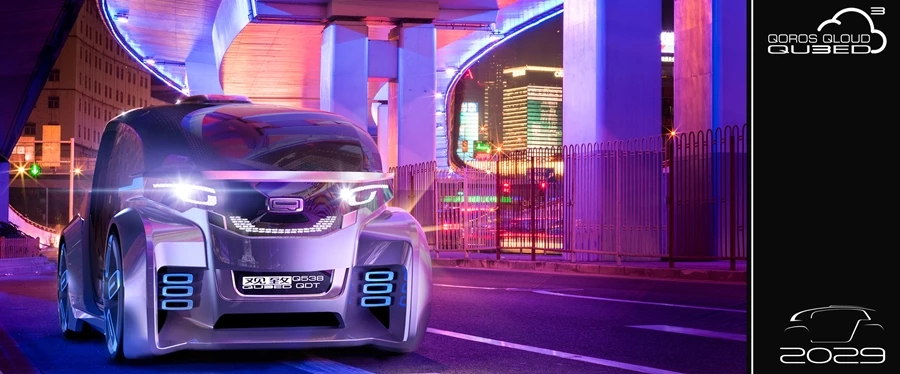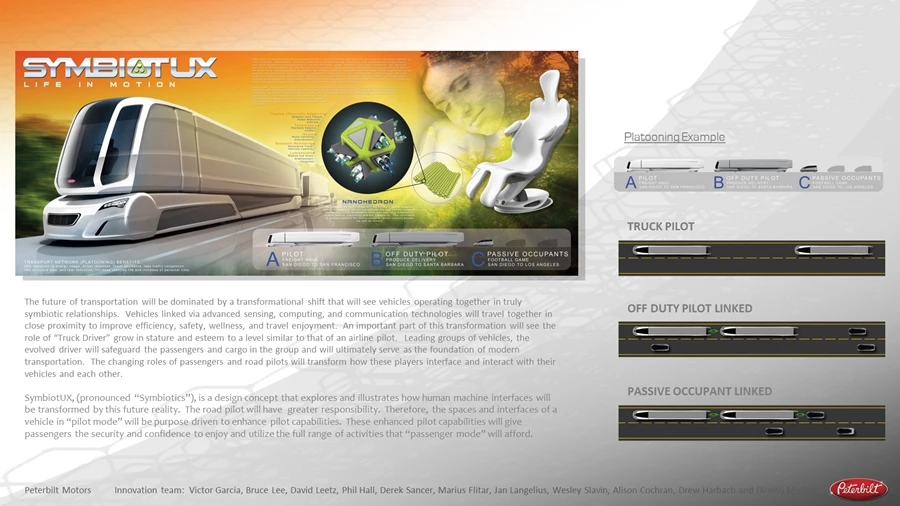If you were asked to design the perfect car, its attributes might include being fast, adaptable and controllable with your thoughts. And, needless to say, it would be able to fly. Infiniti USA has packed all of these features into its People's Choice winning entry for this year's LA Auto Show Design Challenge.
The Design Challenge never fails to provide participants with outlandish future concepts to explore. Previous contests have focused on Hollywood movie cars, patrol vehicles and biomimicry. This year's contest asked for designs that consider how humans will interact with cars in 2029. As ever, the only things more abstract than the theme itself are the actual submissions.
"This year’s entries are particularly compelling because they offer insight into what our vehicles are capable of," says designer and industry expert Chuck Pelly, in a press release. "This year is a turning point for connected car technology and it’s fascinating to see how far we could get in the next 15 years."

Participants used the theme to predict how future technology will enable cars to better connect with our senses and "create a more human-like relationship" with us. Entries focused in particular on the car interior and how it will help people to integrate with their vehicle.
Infiniti's design was by far the most radical of this year's entries (which is no small achievement in itself) and this was reflected in its People's Choice public vote triumph. Synaptiq is envisioned as a "wearable" cockpit and human-machine interface created specifically to compete in Infiniti's own Air, Rally, Circuit (ARC) triathlon race series. The Synaptiq's "Symbiotic User Interface Technology" (SUIT) connects the vehicle to the driver's thoughts via a spinal lock attachment, which suspends the driver in the driving position.
The Synaptiq can be switched between three different external vehicle casings that are designed for the different stages of the ARC race. For the first stretch, from Los Angeles to Las Vegas, the car takes the form of an F1-type racer. The second stage is a desert race to the Grand Canyon, for which the Synaptiq cockpit dons a buggy-type vehicle exterior. The final stage requires the Synaptiq to become an air racer for a gymkhana-style contest through virtual pylons back to LA.

The winner of the judges' vote was the "CARpet" (Henceforth Carpet) from Honda Advanced Design Tokyo. The Carpet aims to create a morphing interior. It is a fully-autonomous vehicle with two main elements: a flexible interior carpet and a "Honda Ball." The flexible carpet allows passengers to shape the car's interior to meet the preferences of those inside. The ball, meanwhile, allows users to interact with it via voice, touch and gesture to control the vehicle and its features.
A second Honda entry came from its R&D Americas arm. The Acura Human / Machine Interface Concept is similar to the Carpet, in that it allows those in the car to shape the interior. The interior is made of fabric-like material that can be shaped to suit those inside the vehicle. The vehicle learns a user's preferences and uses biometric identification to set up the vehicle accordingly when they enter it.

Another concept that learns about its driver is the Qoros Qloud Qubed, or Q for short. Q is a "multi-dimensional personal management assistant." Like the Acura concept, it changes the interior layout of the car to the user's preference, but it also monitors the driver's performance and will take the vehicle into an autonomous mode if it detects any potential irresponsibility.
Finally, the Peterbilt SymbiotUX aims to enhance the awareness and capabilities of drivers. Performance is monitored, with feedback provided and automatic corrections made. Factors such as aroma are adjust to change to mood within the vehicle, while the preferences of those inside, such as seating position, are learned and provided when the vehicle is in autonomous mode.
The design concepts are on display at the LA Auto Show until November 30th. You can view all of the concept images in our gallery.
Source: LA Auto Show




